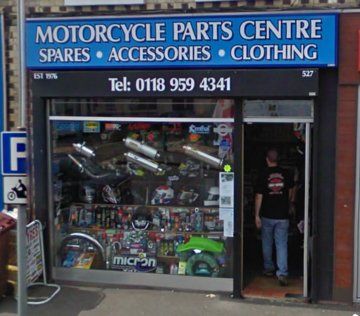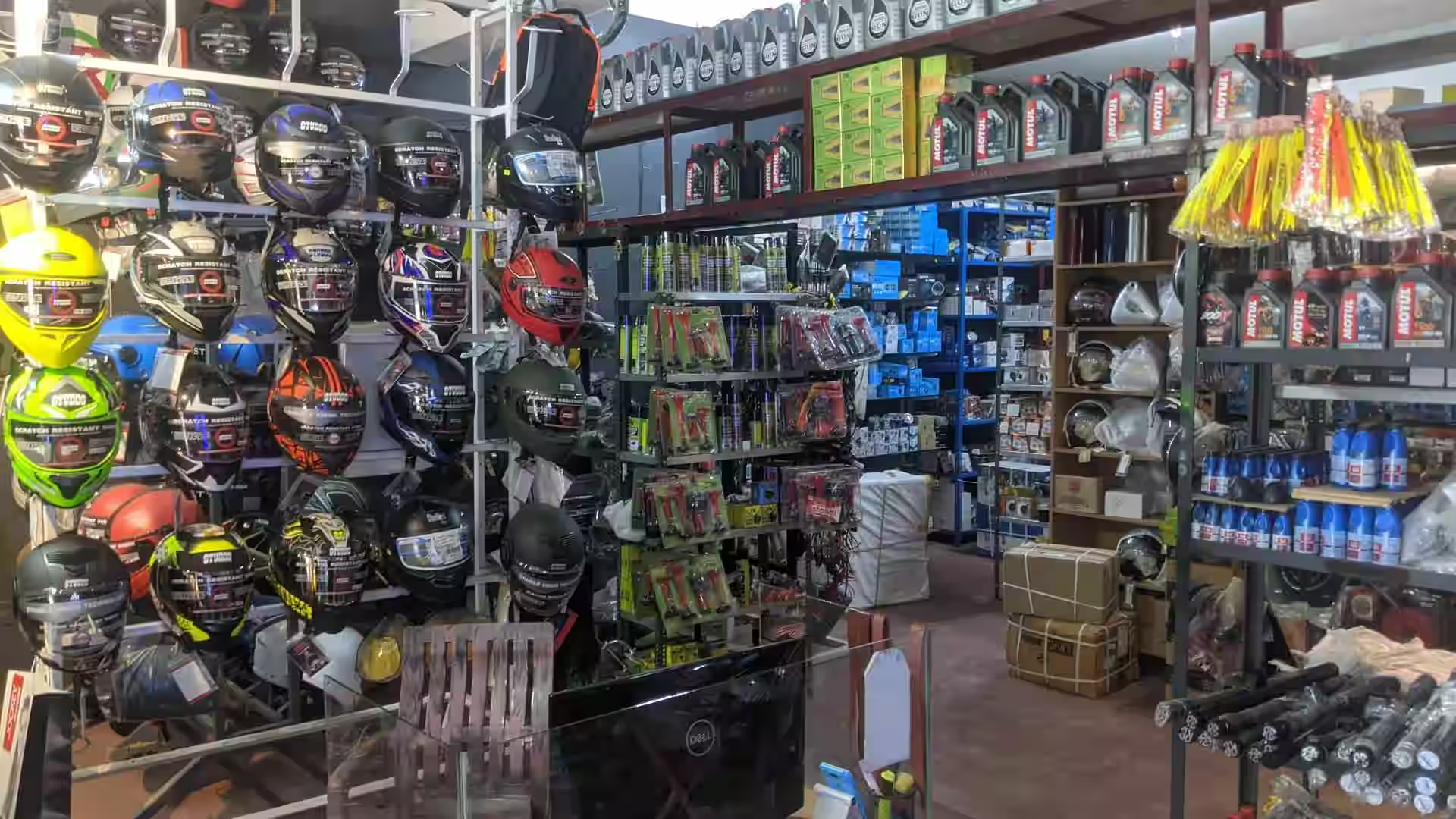See Our Motorcycle Shop for Professional Recommendations and High Quality Products
See Our Motorcycle Shop for Professional Recommendations and High Quality Products
Blog Article
Recognizing the Vital Parts of a Motorbike: A Comprehensive Overview for Enthusiasts
For motorbike enthusiasts wanting to boost their riding experience and ensure their bikes run efficiently, understanding the vital components of a bike is paramount. Each component, from the engine's elaborate operations to the important duty of the stopping devices, not only affects performance yet also safety and comfort. This overview will certainly go through the essential components that every biker ought to be acquainted with, enabling notified options in both upkeep and potential upgrades. As we begin this expedition, one must ask: how does each element engage to develop the seamless ride every enthusiast seeks?
Engine Components

The camshaft plays an important duty in managing the timing of the engine's shutoffs, making sure the precise opening and closing needed for effective gas and air intake, along with exhaust expulsion. This timing is vital to keeping ideal engine performance and effectiveness. In addition, the carburetor or fuel shot system, depending on the motorbike design, is in charge of mixing air with fuel in the proper ratio for combustion.
The air conditioning system, either air or liquid-based, functions to maintain the engine's temperature within functional restrictions, avoiding overheating and making certain durability - motocross gear. Each component, carefully made and integrated, adds to the smooth operation of the engine, defining the bike's power outcome and general performance
Transmission System
Indispensable to the motorbike's capability, the transmission system guarantees reliable power transfer from the engine to the wheels. This system makes up several critical components, including the clutch, gearbox, and final drive, each playing a crucial function in equating the engine's power right into motion. The clutch, commonly run by a hand bar, serves to disengage the engine and engage from the transmission, permitting smooth gear modifications and regulated acceleration.
The transmission, often referred to as the transmission appropriate, consists of a set of gears that bikers can by hand change via to adjust the bike's speed and torque outcome. These gears are organized in a series that makes it possible for the motorbike to speed up smoothly and maintain optimal engine performance throughout various speeds. Most bikes make use of a sequential gearbox, needing the cyclist to shift gears in a predetermined order.
Braking Devices
While recognizing the transmission system is crucial to taking advantage of a motorbike's power, equally important is the capacity to regulate and stop that power successfully, which is where stopping devices come right into play. Brakes are vital for security and efficiency, offering the motorcyclist with the required control to navigate different terrains and conditions. Usually, motorcycles feature 2 sorts of stopping systems: disc brakes and drum brakes.
Disc brakes are extra prevalent in modern-day motorbikes due to their premium efficiency. This system uses better heat dissipation, regular efficiency, and enhanced stopping power, especially in wet conditions.
Alternatively, drum brakes, though less usual, are still found in some motorbikes. They function by pushing brake footwear versus the inner surface of a drum affixed to the wheel. While usually less reliable in warmth dissipation and quiting power, drum brakes are simpler and more economical.
Understanding these braking systems' subtleties permits bikers to keep their bikes properly and value the engineering that makes sure effective and safe stopping.
Suspension and Guiding
Suspension and steering systems are important elements that considerably influence a motorbike's handling and trip comfort. The shock absorber, being composed of forks at the front and shock absorbers at the back, soaks up roadway abnormalities, boosting stability and control. Front forks, generally telescopic or inverted, compress and rebound to mitigate impacts, while back shock absorbers keep tire call with the road, important for traction and security.
Steering, centered around the handlebars, attaches the cyclist to the bike's directional control. The guiding head bearings ensure smooth procedure, permitting accurate maneuverability. Correct alignment and upkeep of these bearings are essential for predictable steering action and minimizing biker tiredness.
The suspension's adjustability is an additional important facet; preload, damping, and rebound setups permit modification to fit different riding designs and problems. This flexibility is crucial for maximizing efficiency, whether navigating metropolitan streets or tackling sturdy tracks. Innovations like digital suspension systems offer real-time changes, enhancing ride high quality across varied terrains.

Electric Systems
After ensuring a smooth and controlled adventure via efficient suspension and guiding systems, interest transforms to the electric systems, a critical facet of contemporary bikes. These systems play a vital role not only in beginning the engine but likewise in powering numerous components that enhance the performance and security of the motorcycle.
At the heart of a bike's electrical system is the battery, which shops electrical energy necessary for beginning the engine and powering supporting systems - motocross parts nz. The alternator or generator, coupled with Full Article the rectifier-regulator, ensures the battery remains billed while the motorbike functions, transforming mechanical power into electric power and keeping voltage degrees
The ignition system, another essential component, is accountable for sparking the air-fuel blend in the engine's cyndrical tubes. Modern bikes typically utilize an electronic ignition system, offering greater effectiveness and dependability contrasted to typical systems.
Lights systems, consisting of headlights, tail lights, and indications, are additionally important, making sure exposure and security for the cyclist. Additional electronic elements such as sensing get more units, control devices, and shows contribute to innovative attributes like fuel injection monitoring, anti-lock braking systems (ABS), and digital control panels, better enhancing the riding experience.
Conclusion
An extensive comprehension of a motorcycle's essential parts, including the engine, transmission system, stopping systems, suspension, guiding, and electric systems, is essential for fanatics aiming to maximize convenience, security, and performance. Proficiency of these aspects permits notified choices relating to upkeep and upgrades, ultimately enhancing the riding experience. By integrating this expertise, bikers can ensure their motorcycles operate at peak efficiency and dependability, cycle gear jackets thus making the most of both satisfaction and long life of their cars.
For motorcycle enthusiasts looking to raise their riding experience and ensure their bikes run smoothly, comprehending the crucial elements of a bike is extremely important.Indispensable to the motorcycle's performance, the transmission system guarantees reliable power transfer from the engine to the wheels.While understanding the transmission system is key to harnessing a motorbike's power, equally important is the capability to control and stop that power successfully, which is where stopping mechanisms come into play. Typically, motorbikes feature two kinds of stopping systems: disc brakes and drum brakes.
An extensive understanding of a motorbike's necessary parts, including the engine, transmission system, stopping devices, suspension, guiding, and electric systems, is essential for enthusiasts aiming to enhance performance, comfort, and safety.
Report this page